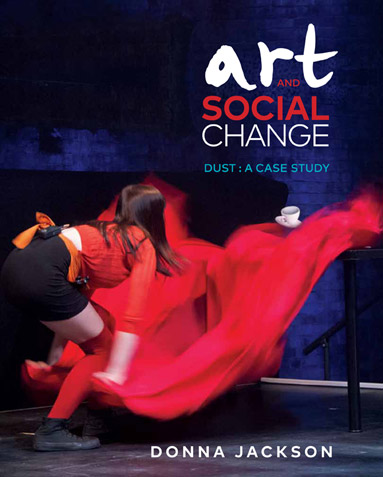
A Method and Practice
Donna Jackson
It is my experience that arts projects and political theatre benefit from the support of transparent project management. Some artists find creative energy in chaos. I find chaos distracting and time consuming. A work method assists in the creation of a well-organised and safe environment in which very diverse groups of people can collaborate.
This method of working has been developed over a period of years and reflects my need to have strong project management so that aesthetic and creative ideas can flourish. I label the work I am engaged in, depending on the context, as either ‘democratic art making’1 or ‘socially engaged arts’.2 My method includes a number of processes I have observed, trialled and adopted. The elements of my work method include clear and simple aims, job descriptions, timelines and budgets. Project tools I use include a marketing plan, evaluation criteria, a hierarchy of decision-making and production plans. These are compiled into a range of briefing documents, which are then given to both paid and unpaid collaborators.
Aims
I start each project with a list of no more than six aims. This enables all involved to focus on specific ideas without being distracted. The aims can change during the life of the project however this needs to be communicated in writing to all involved.
Job descriptions
I list all the roles in the project, paid and unpaid. Under each role, in point form, I list the tasks for which that role has responsibility. I also list my role and responsibilities as director. On big projects, clarity in job descriptions means everyone understands who to go to for any task or issue. This clarity gives people the freedom to focus on their role in the project and deliver their set of agreed tasks.
Timeline
The timeline lists when each of the essential tasks will be delivered by each of the group leaders. Checking the timeline at meetings is a way to ensure all members of the team meet important deadlines. (I include myself in this process.)
Budgets
Sections of the budget can be handed over to different team leaders to manage, e.g. the production manager, marketing manager, front-of-house manager or volunteer coordinator. The budget is updated at regular meetings. Budgets are at the heart of a project. Managed well, they can create surpluses that make important things possible like gifts to thank people or paid parking for volunteers or the employment of the right photographer to document the work.
Marketing plans
All projects need a marketing plan and this should include an online strategy and campaign. One thing I still find useful with a large cast is to print physical postcards that have a great image on them. For a project with eighty participants I often have 2,000 postcards printed. Those eighty people then use them to lure an audience to the show. This old style, person-to-person connection works well as it is an intimate invitation to something of importance.
Evaluation criteria
It’s important to determine an evaluation process before the project commences. This keeps me on target as to which criteria I am using to measure the project’s success. The mix required is often quantitative, (how many people in the audience, how many people participated) and also qualitative, (what was the quality of the engagement). I have discovered it is useful to interview participants at the start of a project and again at the end. This provides a way to demonstrate change in participants, which they can explain in their own language and style. I have also found using a debrief session to listen to participants and providing a journal for people to write in are both effective evaluation tools. Honest and thorough evaluation helps me to develop new ideas and processes for creating future projects. For this reason I find evaluations a very informative component of my practice.
Hierarchy of decision-making
As I work on large projects and often a number of projects at one time, I like to be clear as to who can make which decision in each area of a project. I do this by listing all the roles and placing them in boxes in a diagram with lines showing which role is connected to the next and who is responsible to whom. This means if there is a problem, it is clear who has the responsibility and the authority to rectify it.
Production plans
I create production plans for theatre shows, projects and events, including a stage plan and lighting plans. I often work on multi-sited projects where I direct and support numerous artists who are all working in different mediums and often in different geographic locations. In these projects, I assist artists to develop a detailed production plan, which reassures me they know how to create the work safely and within the budget before they begin building it. I review the plan before allowing the project to go into the construction phase, to ensure it is technically viable.
Briefing document
I believe people are able to participate and contribute to projects more fully when they have clear information, rules and times frames as this prevents time being wasted. Before commencing Dust each participant was given a briefing document which included the project aims, background to the issue of asbestos, job descriptions, a contact sheet, a hierarchy of decision-making, a rehearsal schedule and information in relation to parking, food, toilets and personal property.
Clear structure and strong foundations help me to work collaboratively with other people. These are the main elements of my method for creating arts projects.
